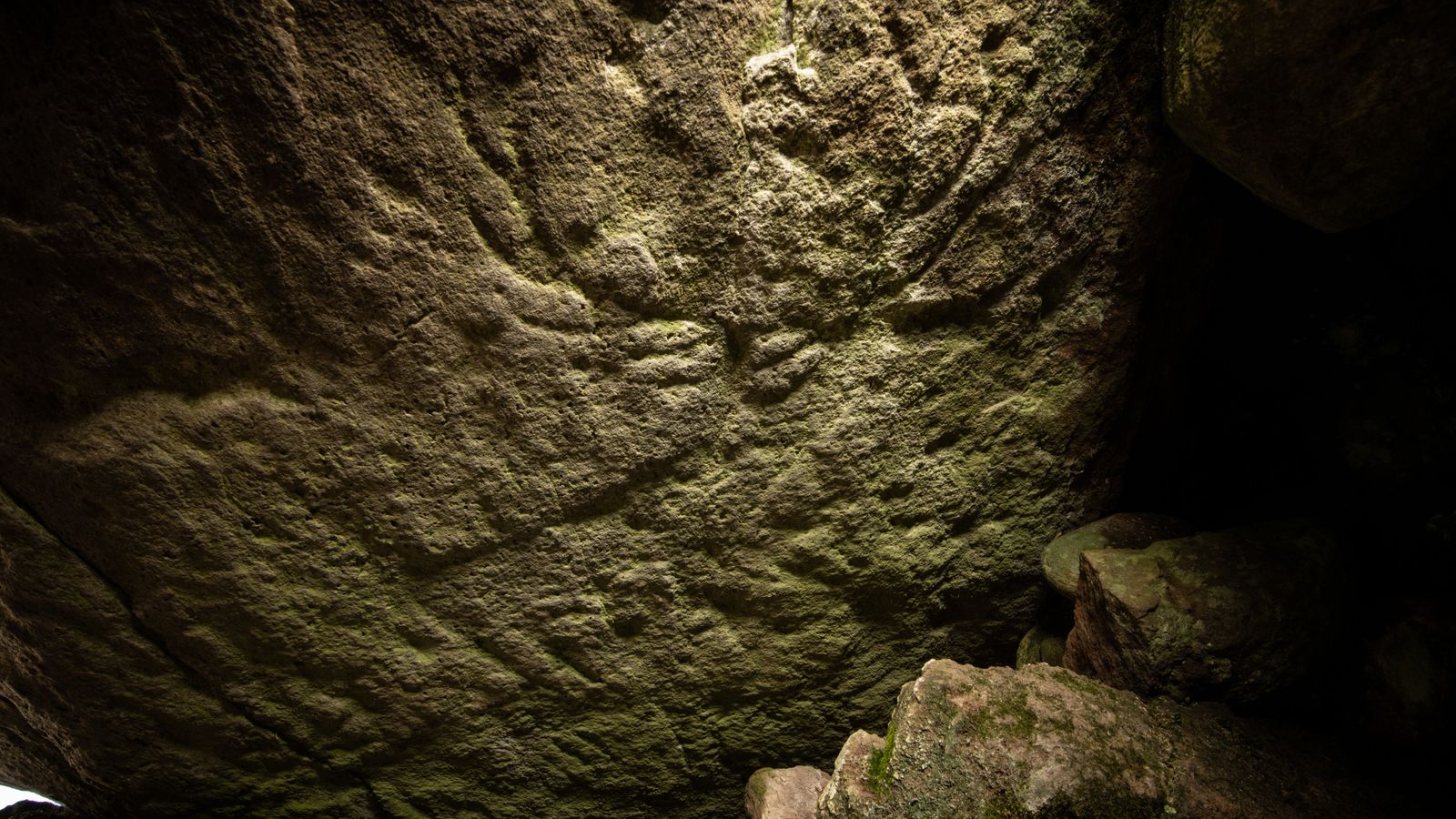Prehistoric carvings of animals have been discovered in Scotland for the first time.
Thought to be up to 5,000 years old, dating to the Neolithic or Early Bronze Age, they depict two male red deer with fully grown antlers.
Other carvings are suggestive of younger deer, Historic Environment Scotland (HES) said.
Hamish Fenton, who has a background in archaeology, discovered the images by chance in an ancient burial site at Dunchraigaig Cairn, Kilmartin Glen, Argyll.
The images are the earliest known animal carvings in Scotland, and the first clear examples of deer carvings from the Neolithic to Early Bronze Age in the whole of the UK, according to HES.
Kilmartin Glen is known for its high concentration of ancient remains from the period, including some of the clearest cup and ring markings (a form of prehistoric art mainly found in Scotland and northern England, but also across the UK and parts of Europe).
It is also the first time that animal carvings dating from this period have been discovered in an area with cup and ring markings in the UK, HES said.
Deer would have been a valuable source of bones, meat and hides, with their antlers used to craft a variety of tools.
Mr Fenton said: “I was passing Dunchraigaig Cairn at dusk when I noticed the burial chamber in the side of the cairn and decided to slide inside with my torch.
“As I shone the torch around, I noticed a pattern on the underside of the roof slab which didn’t appear to be natural markings in the rock.
📢 Seriously massive news alert! 📢
Prehistoric animal carvings have been discovered for the first time in Scotland.
These recently authenticated carvings rewrite the story of prehistoric rock art in north-west Europe.
News release here: https://t.co/2Ah6t9bT7H pic.twitter.com/6Ge1ZjeoXv
“As I shone the light around further, I could see that I was looking at a deer stag upside down, and as I continued looking around, more animals appeared on the rock.
“This was a completely amazing and unexpected find and, to me, discoveries like this are the real treasure of archaeology, helping to reshape our understanding of the past.”
Dr Tertia Barnett, principal investigator for Scotland’s Rock Art Project at HES, said: “It was previously thought that prehistoric animal carvings of this date didn’t exist in Scotland, although they are known in parts of Europe, so it is very exciting that they have now been discovered here for the first time in the historic Kilmartin Glen.”
She added: “This incredible discovery in Dunchraigaig Cairn makes us wonder if other animal carvings previously unknown to the UK are hidden in unexpected places in our ancient landscapes, waiting to be uncovered in the future.”
There are more than 3,000 prehistoric carved rocks in Scotland, the vast majority of which are abstract markings of a central cup mark surrounded by concentric rings.
HES said: “While many of these mysterious carvings can still be seen in the open landscape today, we know little about how they were used, or what purpose they served.”






















